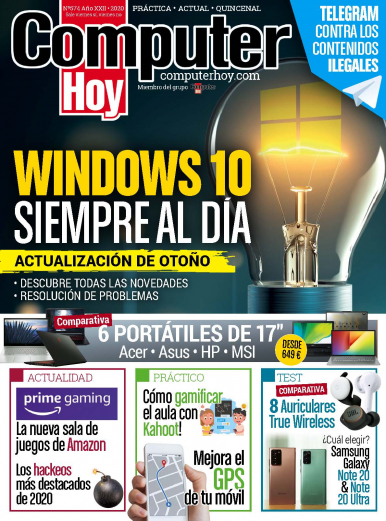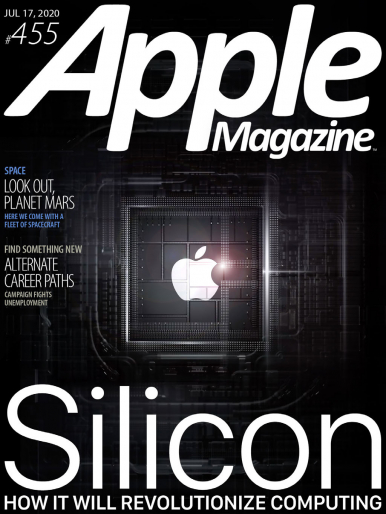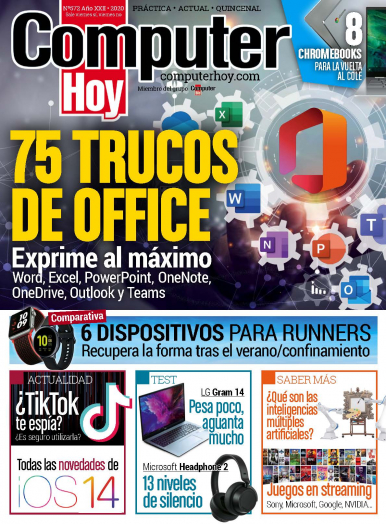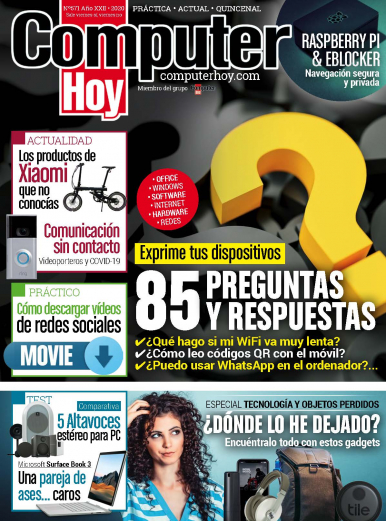
Estás filtrando por
Se encontraron 1551 resultados en recursos

La mejor guía de seguridad. Siempre a salvo en Internet.
Actualiza tu equipo.
Instala un antivirus.
Asegura tu WiFi.
Cifra ficheros.
Compras online.
Y mucho más...
Fuente:
Pasa La Página
Formatos de contenido:
Publicaciones periódicas
Compartir este contenido
Computer Hoy - 16/10/20
Copia el enlace o compártelo en redes sociales

Computer Hoy - 02/10/20
Windows 10 siempre al día. Actualización de otoño.
Descubre todas las novedades.
Resolución de problemas.
Cómo gamificar el aula con Kahoot!
Fuente:
Pasa La Página
Formatos de contenido:
Publicaciones periódicas
Compartir este contenido
Computer Hoy - 02/10/20
Copia el enlace o compártelo en redes sociales

AppleMagazine - 11/09/20
Emmys: Apple TV + Racks up Award nominations.
Bring in the experts: It's time to secure your home network.
Computer glitches disrupt classes as school return online.
What to expect at Apple's "Time flies" special event on September 15.
Fuente:
Pasa La Página
Formatos de contenido:
Publicaciones periódicas
Compartir este contenido
AppleMagazine - 11/09/20
Copia el enlace o compártelo en redes sociales

AppleMagazine - 17/07/20
Silicon. How will revolutionize computing.
Space. Look out, planet mars. Here we come with a fleet of spacecraft.
Find something new. Alternate Career paths. Campaing fights unemployment.
Fuente:
Pasa La Página
Formatos de contenido:
Publicaciones periódicas
Compartir este contenido
AppleMagazine - 17/07/20
Copia el enlace o compártelo en redes sociales

Computer Hoy - 04/09/20
75 trucos de office. Exprime al máximo Word, Excel, PowerPoint, OneNote, OneDrive, Outlook y Teams.
Comparativa. 6 dispositivos para Runners. Recupera la forma tras el verano/confinamiento.
Actualidad. ¿Tik Tok te espía? ¿ Es seguro utilizarla?
Microsoft Headphone 2. 13 niveles de silencio.
Fuente:
Pasa La Página
Formatos de contenido:
Publicaciones periódicas
Compartir este contenido
Computer Hoy - 04/09/20
Copia el enlace o compártelo en redes sociales

AppleMagazine - 07/08/20
Huawei. A genuine competitor to Apple and Google.
New iMac. Ultimate desktop. Faster performance,SSDs, camera & audio.
New season. Back to school. Covid reshapes & reduces spending.
Google unveils budget Pixel phone as pandemic curbs spending.
Fuente:
Pasa La Página
Formatos de contenido:
Publicaciones periódicas
Compartir este contenido
AppleMagazine - 07/08/20
Copia el enlace o compártelo en redes sociales

AppleMagazine - 25/09/20
iPad refining the world's most popular tablet.
Tesla. Unveiling new tech. Next big bet rides on better batteries.
Elections. Security experts. Say it is safe to apply for ballots by Email.
Microsoft will buy video game make ZeniMax for $7.5 billion.
Fuente:
Pasa La Página
Formatos de contenido:
Publicaciones periódicas
Compartir este contenido
AppleMagazine - 25/09/20
Copia el enlace o compártelo en redes sociales

AppleMagazine - 18/09/20
Special Edition.
Series 6. Blood O2, SE Version, New Colors, Bands & More.
Processors. Nvidia to buy arm, sparking fears of chip dominance.
Savior Deal. Oracle & Tik Tok, what exactly it is, none will say.
Venus: Astronomers see possible hints of life in clouds.
Fuente:
Pasa La Página
Formatos de contenido:
Publicaciones periódicas
Compartir este contenido
AppleMagazine - 18/09/20
Copia el enlace o compártelo en redes sociales

AppleMagazine - 04/09/20
Control over adverts: iOS 14 Features will change the Battlefield.
15 years later, walmart to launch its answer to Amazon Prime.
Apple, Google build virus-tracing tech directly into phones.
Chadwick Boseman's death leaves saddening mark on rough 2020.
Fuente:
Pasa La Página
Formatos de contenido:
Publicaciones periódicas
Compartir este contenido
AppleMagazine - 04/09/20
Copia el enlace o compártelo en redes sociales

Computer Hoy - 21/08/20
Exprime tus dispositivos. 85 preguntas y respuestas.
¿Qué hago si mi WiFi va muy lenta?
¿Cómo leo códigos QR con el móvil?
¿Puedo usar WhatsApp en el ordenador?
¿Dónde lo he dejado?
Fuente:
Pasa La Página
Formatos de contenido:
Publicaciones periódicas
Compartir este contenido
Computer Hoy - 21/08/20
Copia el enlace o compártelo en redes sociales
Selecciona las Colecciones en las que vas a añadir el contenido
Para consultar los contenidos añadidos busca la opción Tus colecciones en el menú principal o en Mi perfil.
